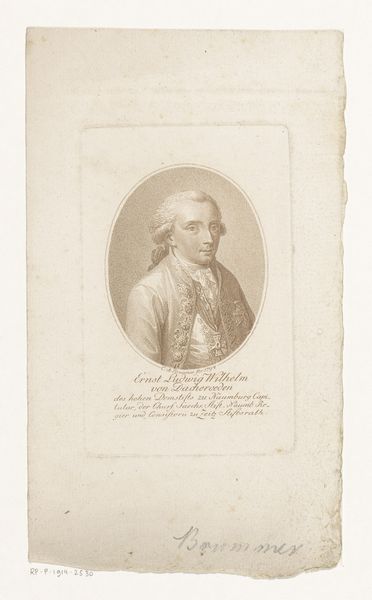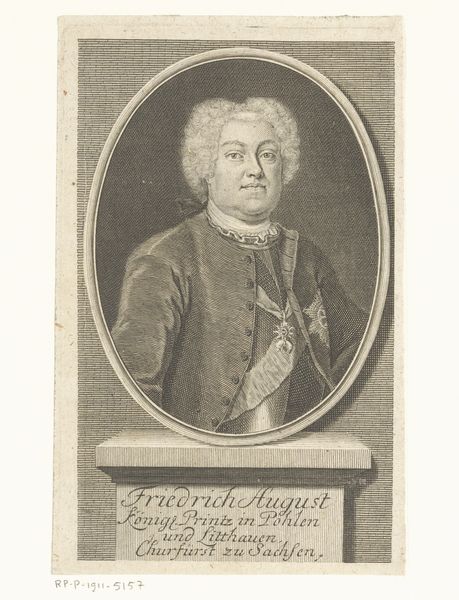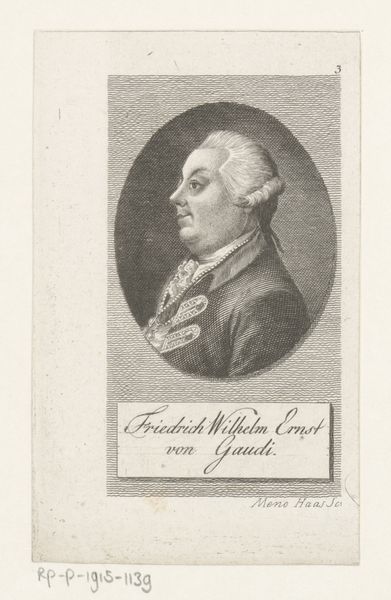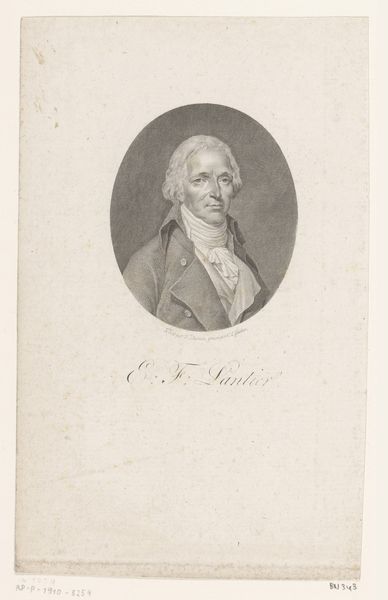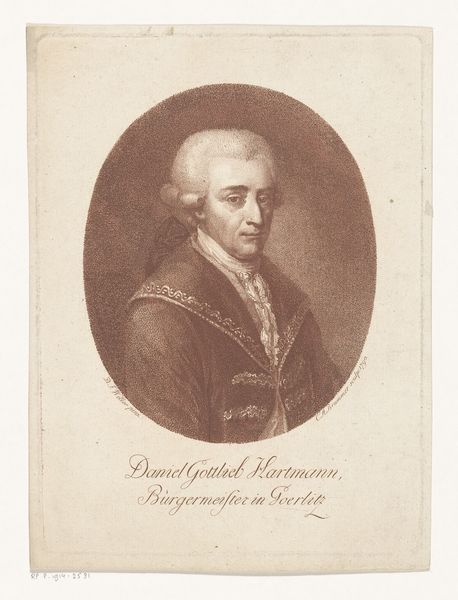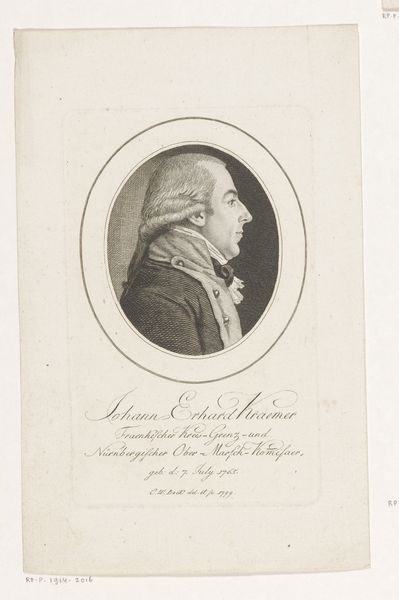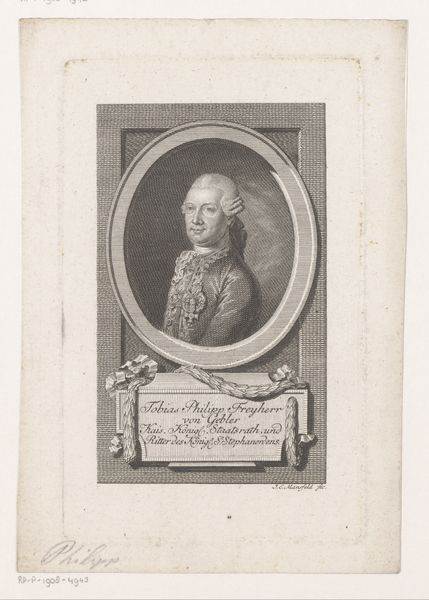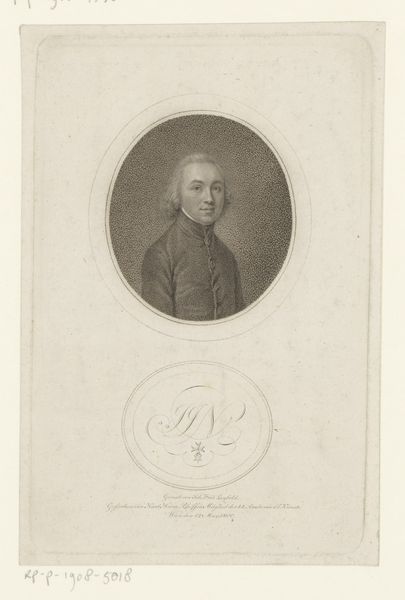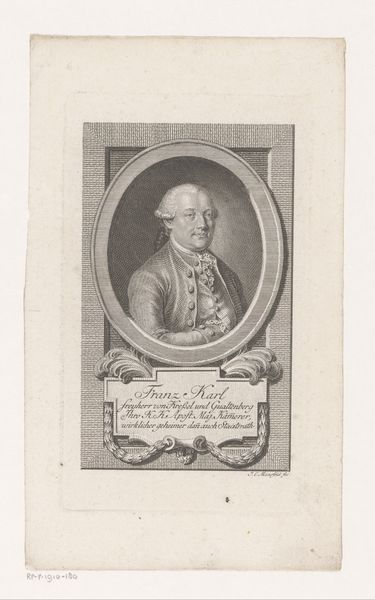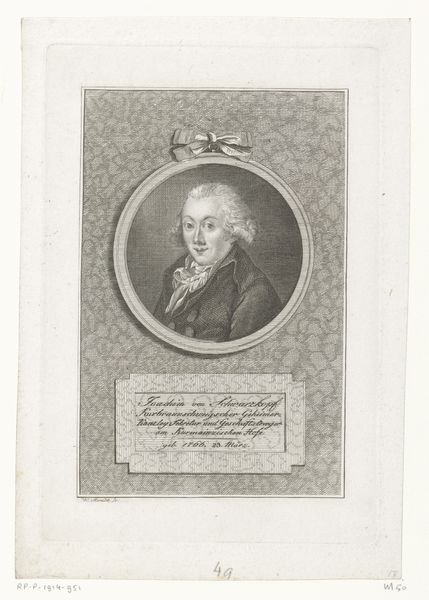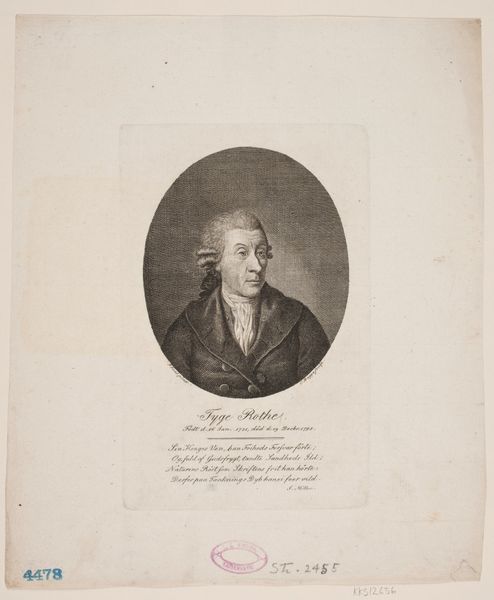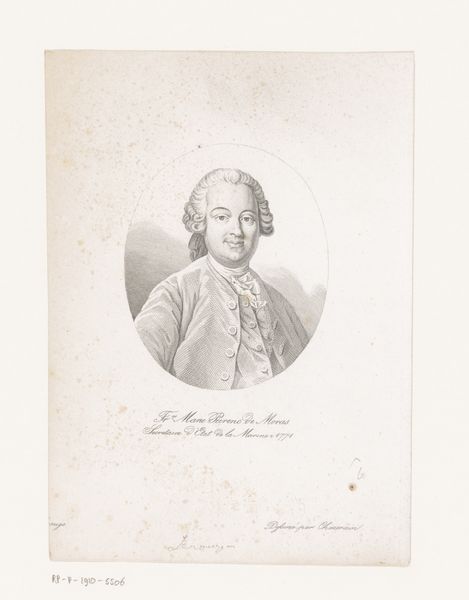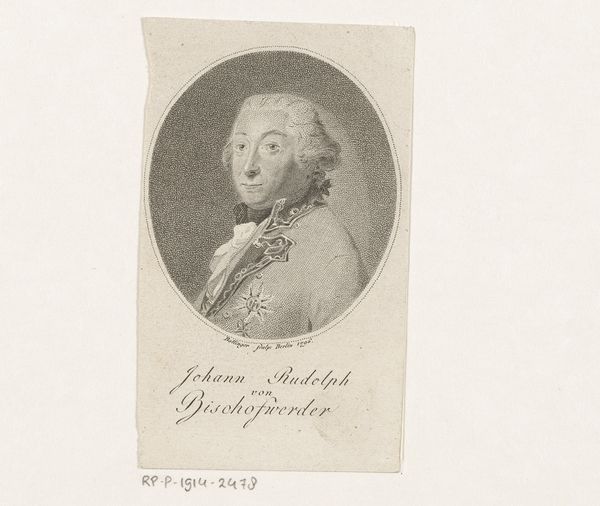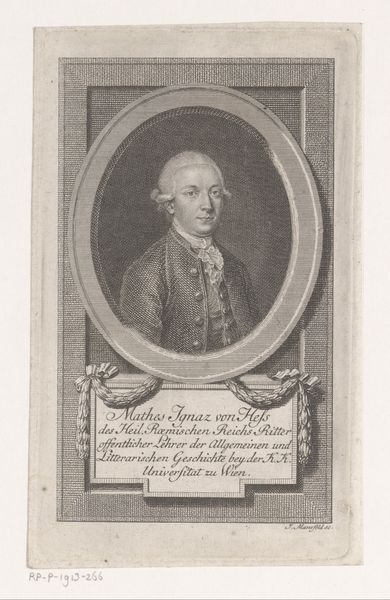
Dimensions: height 200 mm, width 145 mm
Copyright: Rijks Museum: Open Domain
This portrait of Justus Friedrich Runde was made by Heinrich Schwenterley, likely towards the end of the 18th century. It’s an etching – a printmaking technique that uses acid to create lines in a metal plate, which is then inked and pressed onto paper. The real subject here is the line itself. Look closely, and you’ll see that the image is built up from a dense matrix of strokes, each one carefully considered to build up tone and texture. The weight of the lines, the cross-hatching used to create shading, all of this speaks to the skills of the printmaker, and the amount of labor involved. There’s a social dimension too. The use of printmaking allowed for images like this one to be reproduced and disseminated relatively widely, making them important tools for building reputation and promoting oneself in the public sphere. The fact that someone like Runde, a professor of law, would commission such a portrait tells us something about the values of the time, and the importance of image-making as a form of social currency.
Comments
No comments
Be the first to comment and join the conversation on the ultimate creative platform.
